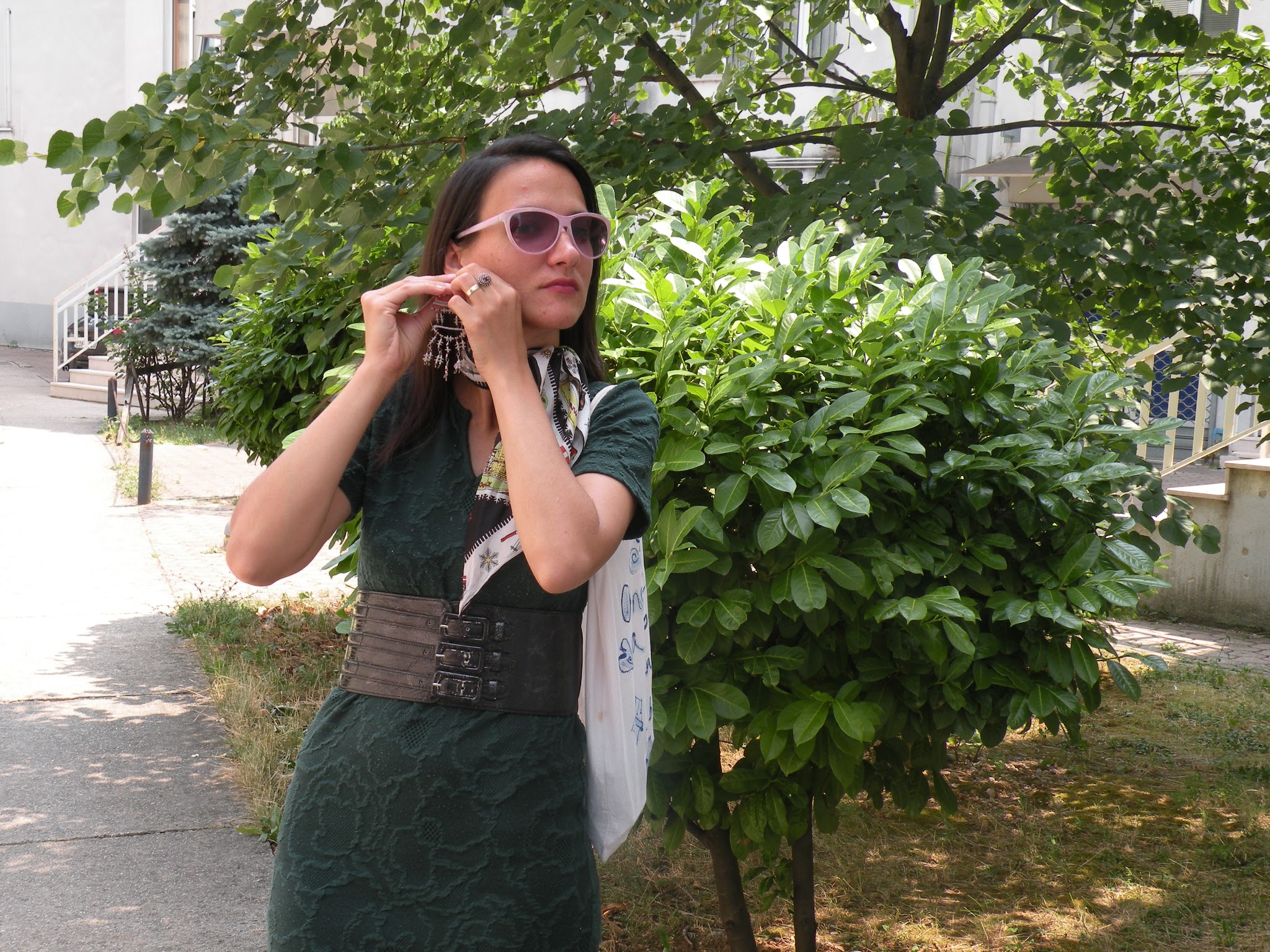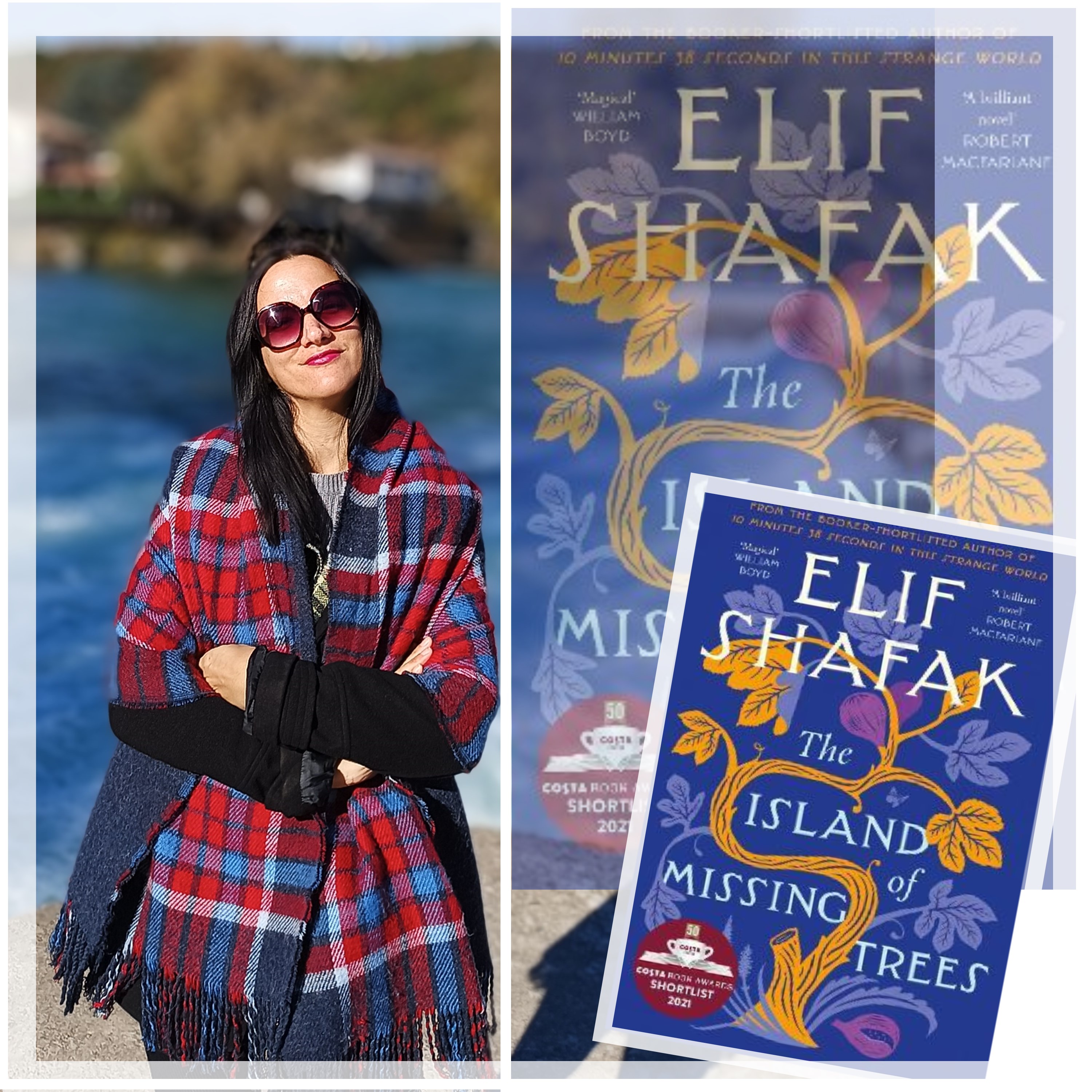Visiting Hutovo Blato in a pastel dress / Posjet Hutovom blatu u pastelnoj haljini
A DREAM (MY TRANSLATION OF A POEM BY CROATIAN POETESS VESNA PARUN)
My mother's hand, like a white sail, a wing of a tender oriole.
Do you remember a fairy tale about a golden apple, a moonlight's rainbow?
On a swing branch transparent to the (point of) snow, soft to the (point of) sorrow,
my eyes weave silent conversations, long lullabies.
Wells filled with heavy water travel into an unknown harbor.
My mother's song, a white daisy, is guiding me by the hand.

HERE ARE SEVEN IDEAS FOR WHAT TO DO IN HUTOVO BLATO
Ramsar site
Neretva Delta has been recognised as a Ramsar site since 1992, and Hutovo Blato since 2001. Both areas form one integrated Ramsar site that is a natural entity divided by the state border.[5] The Important Bird Areas programme, conducted by BirdLife International, covers protected areas in Croatia and Bosnia and Herzegovina.[6]
Hutovo Blato Nature Park
Since 1995, Hutovo Blato has been protected as a Hutovo Blato Nature Park[7][8] and managed by a public authority. The whole zone is well protected from human impact and functions as an important habitat for many plants and animals .[6] Historical site, Old Fortress Hutovo Blato, is located in the area of Nature Park. Nature Park "Hutovo Blato" is located in the South-Western part of Bosnia and Herzegovina, 30 km from City of Mostar and near the Croatian border. It stretches over an area of about 7,411 ha and represents one of the richest wetland reserves in Europe. Until 1995, when the cantonal protected area was founded, Hutovo Blato represented well-known area mainly for its hunting and fishing tourism. Every winter over 200 species of birds find their shelter inside this untouched nature.[9] Visitors can enjoy relaxation, recreational activities in nature, sport-fishing, cycling and main tourist attraction – photo safari. There is also an educational path providing information of park and for rising environmental awareness and need for preservation of natural heritage in Nature park "Hutovo Blato".

Gornje Blato – Deransko Lake
The part of the park which kept its original form and almost untouched nature. Gornje Blato-Deransko Lake is supplied by the karstic water sources of the Trebišnjica river, emerging in the proximity of the bordering hills. It is hydro-geologically connected to the Neretva river through its effluent, the Krupa river, formed out of 5 lakes (Škrka, Deranja, Jelim, Orah, Drijen) and by large portions permanently flooded, also isolated by wide groves of reedbebds and trees, thus representing the most interesting preserved area.[10]
Krupa River
The Krupa river is the Neretva left tributary and the main water current of Hutovo Blato, which leads the waters from Deransko Lake and Svitavsko Lake into the Neretva river. The length of Krupa River is 9 km with an average depth of 5 meters. The Krupa River does not have an actual source, but is actually an arm of Deransko Lake. Also, the Krupa River is a unique river in Europe, because the river flows both ways. It flows 'normally' from the 'source' to the mouth and from the mouth to the 'source'. This happens when, due to high water level and large quantity of water, river Neretva pushes the Krupa river in the opposite direction.[11]
Endemic and autochthonous fish
Birds
Systematic list of registered species on 13 April 2001:[4]
- Little grebe
- Great crested grebe
- Great cormorant
- Pygmy cormorant
- Little egret
- Grey heron
- Purple heron
- Gadwall
- Mallard
- Garganey
- Short-toed eagle
- Western marsh harrier
- Common buzzard
- Eurasian coot
- Ruff
- Wood sandpiper
- Black-headed gull
- Caspian gull
- Alpine swift
- Barn swallow
- White wagtail
- Common nightingale
- Cetti's warbler
- Eastern subalpine warbler
- Blackcap
- Long-tailed tit
- Eurasian penduline tit
- Hooded crow
- House sparrow
- Common chaffinch
- European serin
- Cirl bunting
- Corn bunting

Mediterranean Wetlands comprise the wetlands of the Mediterranean region.
Wetlands are ubiquitous and they may briefly be defined as transitional spaces between land and water. In a more detailed sense, according to the Ramsar Convention on Wetlands, wetlands are defined as:
- "areas of marsh, fen, peat land or water, whether natural or artificial, permanent or temporary, with water that is static or flowing, fresh, brackish or salt, including areas of marine water the depth of which at low tide does not exceed six metres […..] and may incorporate riparian and coastal zones adjacent to the wetlands, and islands or bodies of marine water deeper than six metres at low tide lying within the wetlands".
The Ramsar Classification of wetland types includes 42 types which can be broadly divided into:
- Marine and coastal wetlands
- Inland wetlands
- Human-made wetlands
Among the richest ecosystems in the world, wetlands have an exceptional value, but are also the most threatened. In the Mediterranean, they support high concentrations of birds, mammals, reptiles, amphibians, fish and invertebrate species that cannot be found anywhere else in the world.
Regions in the Mediterranean Basin
- AN ALPHABETICAL LIST OF MEDITERRANEAN WETLANDS
The Mediterranean region is unique because of its special type of climate and its very long history of human use. Wetlands in the Mediterranean Basin are varied, and there are many different types in every country. For example:
- Africa
- Algeria (Chott Ech Chergui)
- Egypt (Wadi El Rayan Protected Area)
- Libya (Ain Elzarga)
- Morocco (Oasis du Tafilalet)
- Tunisia (Chott El Jerid)
- Asia
- Israel (Hula Nature Reserve)
- Jordan (Azraq Oasis)
- Lebanon (Palm Islands Nature Reserve)
- Syrian Arab Republic (Sabkhat al-Jabbul Nature Reserve)
- Europe
- Albania (Lake Shkodra and River Buna)
- Bosnia and Herzegovina (Livanjsko Polje: Livno Karst field and Hutovo Blato)
- Bulgaria (Belene Islands Complex)
- Croatia (Lonjsko polje and Mokro polje including Krapje Dol)
- Cyprus (Larnaca Salt Lake)
- France (Camargue)
- Greece (Messolonghi lagoons)
- Italy (Valli residue del comprensorio di Comacchio)
- Macedonia (Lake Prespa)
- Malta (Ghadira)
- Monaco (Réserve sous-marine du Larvotto)
- Montenegro (Skadarsko Jezero)
- Portugal (Estuário do Sado)
- Serbia (Gornje Podunavlje)
- Slovenia (Lake Cerknica & its environs)
- Spain (Doñana)
- Turkey (Lake Burdur)

Values of Mediterranean Wetlands
(CITED FROM WIKIPEDIA)
Man benefits from wetlands' natural functions and services, which help to meet the needs of millions of people – to cultivate soil, to fish for food, to cut trees for building, to hunt the waterfowl for leisure activities, to organize ecotourism programs in remarkable sites, to use their water for our domestic or agricultural needs, etc.
WETLANDS HAVE A CULTURAL, ECOLOGICAL, ECONOMIC AND HYDROLOGICAL VALUE!
Cultural value
Some cultural values developed in wetland areas are non-material and have become part of the life cycle and livelihood of local residents, such as rituals, beliefs, the seasonal work calendar, and different traditional techniques.[4
Ecological value
The Mediterranean wetlands have a high percentage of endemic species. They not only provide breeding and wintering for millions of birds, they also play a role as a stopping place for an even larger number of birds during migration periods.
Economic value
Environmental economics assumes that by giving a monetary value to nature, it would allow us to better take into account its importance in development choices. The Millennium Ecosystem Assessment gave wetlands a value of US$15 trillion in 1997.
Hydrological value
Wetlands greatly influence the flow and quality of water, thus providing benefits to humans. They store and slowly release surface water, rain, snowmelt and flood waters, maintaining soil humidity during dry periods. But the most important service is the supply of clean water for drinking, agriculture, and industries. Scientists have estimated that a 2,500 acre wetland in Georgia saves $1 million in water pollution control costs annually (OTA 1993).
POST UPDATE 2025- RELEVANT LINKS TO EXPLORE IF YOU WANT TO KNOW MORE ABOUT HUTOVO BLATO !
 |
| dress/haljina: poklon/gift bag/torba: old/stara shoes/cipele: boromina (Borovo) |






















very nice dress..you look so nice
ReplyDeletekisses
thank you<3
DeleteThis comment has been removed by a blog administrator.
DeleteQuesto vestito è uno splendore, bellissime foto!
ReplyDeleteAlessia
Thechilicool
grazie cara:)
DeleteHey dear Ivana! I'm happy you're back at blogging! You're always taking us to magical, natural and breathtaking places ! Wish to be there right now and unplug myself from the city, it could be messy and tired sometimes and this kind of natural landscapes could be the perfect getaway :D
ReplyDeleteHappy to see you exploring, it reminds me a little to some Mexican towns! Love the dress by the way, such a perfect shape and print to explore in a fresh way :D
Have a great week, dear!
Pablo
Fungi Express blog
yes, this type of landscape is always the perfect getaway from the urban jungle:)
DeleteQue maximo amei esse lugar que luxo
ReplyDeleteBlog: https://arrasandonobatomvermelho.blogspot.com.br
Canal:https://www.youtube.com/watch?v=DmO8csZDARM
<3
DeleteHutovo blato looks like a lovely nature retreat and the summery look you wore for your visit is really pretty! You look great in pastels!
ReplyDeleteWhat a pretty dress! Lovely shots!
ReplyDeleteHttp://leftbankgirl.blogspot.com
<3
DeleteLe foto mi piacciono da impazzire e l'abitino è meraviglioso!
ReplyDeletexo Paola
Expressyourself
My Facebook
grazie
Deleteso pretty.
ReplyDelete<3
DeleteNice look and photos!
ReplyDeletexx LL
www.lalouuula.com
Beautiful girl :-)
ReplyDeletexoxo <3
http://sissihope.blogspot.ch
thank you:)
DeleteI'm big on birds and boat rides, but swamps they bring out bugs. Your pictures are quite lovely, I send you many hugs :)
ReplyDeleteAll Things Bright and Lovely
thank you Shamu:)
Delete<3
ReplyDeleteYou look so beautiful.
ReplyDelete<3
DeleteBeautiful place, cute dress! Love your post with nature view <333
ReplyDelete<3
DeleteWow! You look so pretty!!!Have a successful day dear!
ReplyDelete<3
DeletePrelepo mesto! Bas je fotogenicno, priroda je prekrasna kao i ti u preslatkoj pastelnoj haljini. Sesiric je slag na torti. Prava damica!
ReplyDeletePusa
hvala, imam još slika s ovoga mjesta:)
DeleteTo mesto me iznova i iznova oduševljava i obradovala sam se čim sam videla naslov (malo kasnim sa komentarima ovih dana). Izgleda kao prava oaza i ne sumnjam da je odlično mesto za ručak u prirodi. Taj čamac je tako sladak i originalna pozadina za slikanje. Haljinica je divna i lepršava. Mnogo volim tu boju :)
ReplyDeleteda, divno je mjesto:)
Deletenice pics on this seaside. yes, i like your dress a lot - looks great on you. and gosh, interesting shoes, my dear...;-)
ReplyDeleteJennifer